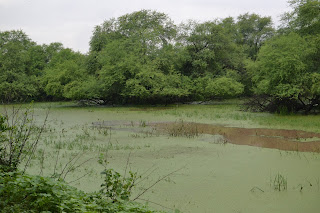Bharatpur
Bharatpur is a city in
the Indian state of Rajasthan.
Bharatpur- The
'Eastern Gateway to Rajasthan', was founded by Maharaja Suraj Mal in 1733 AD,
it was once an impregnable well fortified city, carved out of the region
formerly known as Mewat. The trio of Bharatpur, Deeg and Dholpur has played an
important part in the history of Rajasthan. The place was named as Bharatpur
after the name of Bharat, the brother of Lord Rama, whose other brother Laxman
was worshipped as the family deity of the Bharatpur. The legends say the rulers
Laxman's name is engraved on the state arms and the seals. Bharatpur is also
known as 'LOHAGARH'. It is bound on the north by 'Gurgaon' district of Haryana,
on the east by Mathura and Agra GHANA Ghana 's
plan was prepared in 1896 by the State Engineer for driving and confining the
wild cattle in the dense forest with 250 species of migratory birds during the
monsoon season and 'winter' season, which is famous all over India
Bird Sanctuary- Keoladeo National Park
A paradise for the avian world, and the
pilgrimage for the bird lovers, it was known as the best duck shooting resort
in the British empire . But was declared a
reserve for birds in 1956 and later upgraded to National Park. UNESCO has
listed it as a world heritage site.
The geographical location is ideal as it is on
the main North - South avian route of India Keoladeo Ghana
National Park India but also
from places like Europe, Siberia , China and Tibet
Before mansoon hundreds of these exotic birds
roost and nest building activities start on the babool and kadam trees of the
park. Water coming through the Ajan Bandh starts filling the various ponds and
lakes of the Park. When assured of enough food, hundreds of large, medium and
little cormorant, darter, purple and Grey heron, various species of egret,
painted, open-billed, white necked and black necked stork, white ibis,
spoonbill, night heron and other birds get busy in courting and mating. The
trees are over flowed with nests, one can observe a tree housing nests upto fifties
and sixties in number belonging to different species of birds looking after
their loving young ones. The nests on the trees look like pearl necklaces.
Gracious Saras cranes, the tallest flight birds
nest in exposed and open area, both partners share the duty of hatching, while
chanting incubating duties, they come together, raise their neckand give out
shrill trumpetic calls in unison and at the same time fan their feathers. The
newly born chicks are only 10 cm. in size but grows upto one meter in height
within a year.
As the monsoons arrive birds from every part of
the country start pouring into the park. Migratory water-fowls, including the
pride of Keoladeo Siberian Cranes form the indispensable part of Park. The
water-fowls visit the park in millions during the month of October. The most
noticeable water-fowl coming to the park are barheaded and greyleg geese. The
ducks spotted here are pintail, common teal, ruddy shelduck, mallard, widgeon,
shoveler,common shelduck, red crested pochard, gadwall etc. predatory birds
like imperial eagle, steppe and tawny eagle spotted eagle, marsh harrier and
laggar falcon are attracted towards the park completing the avian food chain of
the ecosystem. Some of them like short-toed eagle, lesser spotted eagle and shikra
are the residents of Park.
About 11 sq. km. area of the park is covered with
water the remaining portion is rich with Kingfisher, Red Vented and white
cheeked Bulbuls, Babblers, Quails, Partridges, Sunbirds, Sparrows and Parakeets
which live in bushes and burrows. The year round activity of the winged
beauties has made the park a pilgrimage for bird lovers and an omithologists
delight.
The animal populace also show their presence
although they are thoroughly dominated by feathers, wings and beaks. The animals
include the Black Buck, Sambhar - the largest Indian Antelope, Spotted deer,
and Nigais. Pythons can also be observed at some places lazing in the sun.
Vehicles are only permitted upto Shanti Kutir inside the park.
The Electra Van of forest department can be engaged in the sanctuary, although the best way to explore the park is on foot or bicycles which are available on hire.
Cycle rickshaws can also be hired.











No comments:
Post a Comment